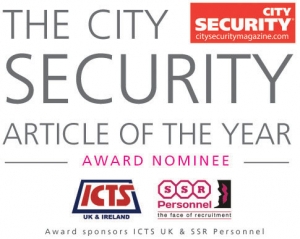Best practice for CCTV operations
As a society we recognise the value of surveillance for counter-terrorism, but personal freedoms are an important construct and therefore the security industry and its clients need to work to best practice for the design and operation of CCTV systems.
Recent coverage in the press has featured the potential ubiquitous intrusion of surveillance cameras, citing examples of the use of CCTV in taxis and the use of automatic facial recognition technology.
The public may rightly be concerned with their use and risk of abuse. Four years ago a survey by the British Security Industry Association estimated that in an urban area on a busy day a person could have their image captured by around 300 cameras on 30 different systems. No one would doubt that figure has grown substantially in the last few years, increasing capability to capture, record and monitor activity, and retrieve evidence of actual incidents.
The Surveillance Camera Commissioner
Maintaining a balance between the fundamental rights and freedoms of citizens on the one hand, and safeguarding them in the community on the other is at the heart of the Surveillance Camera Commissioner’s (SCC’s) strategy. Businesses operating surveillance cameras capturing footage in the public domain should be working to best practice standards.
Compliance with the Surveillance Camera Code of Practice issued by the Home Office in 2015 is a valuable symbol of trust in the public eye. The Surveillance Camera Code of Practice raises standards by enabling surveillance providers to benchmark themselves, encourage continual improvement, and ensure surveillance is robust and fit for purpose. This in turn helps secure public confidence.
The code sets out twelve guiding principles: a comprehensive structure that enables sound, transparent decision-making in regard to the use of surveillance cameras. Since being appointed, the SCC has created a series of tools to support the operators of public space surveillance camera equipment.
The self-assessment tools cover use of:
- CCTV
- automatic number plate recognition (ANPR)
- body-worn video (BWV)
- automated facial recognition technology (AFR)
The practical application of good guidance for public spaces can be found in the Surveillance Camera Code of Practice. www.gov.uk/government/publications/surveillance-camera-code-of-practice
Management and operation of CCTV
British Standard Code of Practice BS 7958 outlines the principles and practice involved in the management and operation of CCTV. Amongst other things, the standard provides a framework for outlining the objectives in the use of a system as well as ensuring records of images are kept securely, with a clear policy regarding the release of information to statutory prosecuting bodies, including the police, and members of the public.
The standard can be used as a management framework for ensuring best practice in all aspects of management and operation of CCTV systems. It includes guidance on working conditions, appropriate use of equipment, the management of recorded information, and legal considerations including privacy and disclosure.
Businesses can gain NSI approval against the full provisions of BS 7958 if they are fully compliant. It is an assurance of professionally and competently run operations, symbolised by the award of the NSI medal and logo.
Businesses can also use contractors that hold NSI approval against specific Annexes to BS 7958. This includes fully trained and security screened contracted staff to work in a stadium’s CCTV control room or sub-contracting out the whole CCTV monitoring service to an external control room.
Whether outsourced or managed in-house, CCTV managed and operated in accordance with BS 7958 provides security managers with significant confidence that operations are fit for purpose.
Security installed and maintained
NSI recently upgraded its own code of practice (NCP 104 Issue 3) for the design, installation and maintenance of CCTV systems. The newly revised code of practice is based on BS EN 62676-4 and provides installers with a structured approach to determining user requirements through an appropriate risk assessment and site survey.
With modern digital camera systems providing high definition images, better accuracy in the recording and retrieval of information, and increasingly facial recognition, quality management and control systems must be in place. These ensure the correct use of CCTV recording and surveillance for the intended purpose, the security of recorded data and a guarantee that rights to privacy are protected and that the latest security software updates are applied to protect from cyber threats.
Together raising standards
Companies demonstrate commitment to good practice by the approvals they hold. NSI Gold approval includes certification to BS EN ISO 9001 for the company Quality Management System as well as adherence to the relevant product standards such as BS 7958 and/or NSI code of practice NCP 104.
NSI is accredited by the United Kingdom Accreditation Service (UKAS), the UK’s sole National Accreditation Body, responsible for determining, in the public interest, the technical competence and integrity of organisations such as those offering certification services. UKAS accreditation signifies NSI operates its certification schemes and issues Certificates of Approval in accordance with International Standards for Accredited Certification of Quality Management Systems (ISO 17021) and Product Standards pertinent to security and fire safety such as BS 7958 for CCTV (ISO 17065).
Companies who benchmark themselves against NSI approval schemes demonstrate commitment to the highest standards of competence in the delivery, monitoring, management and operation of CCTV and security services. NSI approval provides assurance to businesses that installers, operators and the management of CCTV systems and control rooms deliver consistent best practice in surveillance that can be shared effectively with law enforcement bodies in the UK’s fight against terrorism.
Richard Jenkins Chief Executive, NSI
See also: Surveillance on public transport networks: too intrusive?
CCTV advances after high conviction rate for London riots
Facial recognition: cutting-edge technology



